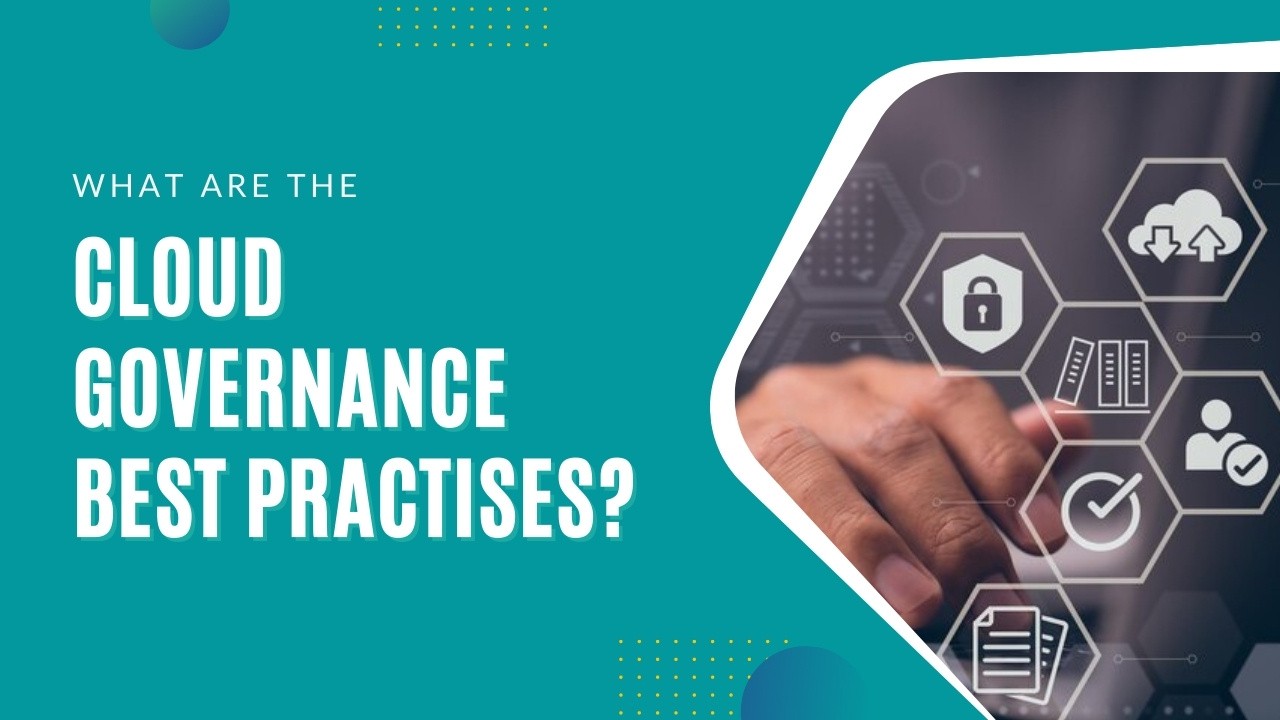Are you going to junk a legacy model to adopt the cloud? It does make sense, given the benefits of the cloud native environment. Cloud computing has become an indispensable part of modern business operations. The advantages of cloud computing include cost savings, scalability, and increased agility. However, as organizations increasingly adopt cloud computing, the need for effective governance has become increasingly important. Cloud governance refers to the set of policies, procedures, and standards that organizations put in place to manage the use of their cloud computing resources. Let’s take a look at how governance policies which have been tailored specifically to the cloud are important for enabling business & mitigating new challenges. In this blog, we will examine the best practices for cloud governance.
Define Your Cloud Computing Strategy
Before embarking on a cloud computing journey, it is important to define your cloud computing strategy. This strategy should outline your goals and objectives for cloud computing, as well as the resources that you will need to achieve these goals. It should also outline your policies and procedures for managing cloud computing resources, including security, privacy, and data management.
- Outline Goals and Objectives: The first step in defining your cloud computing strategy is to outline your goals and objectives for using cloud computing. This may include cost savings, increased agility, and improved scalability.
- Assess Resource Requirements: Once you have defined your goals and objectives, you need to assess your resource requirements. This includes identifying the type of cloud computing environment that you need, such as public, private, or hybrid, and the resources that you will need to implement and manage your cloud computing environment.
- Establish Policies and Procedures: Establishing clear policies and procedures is a key part of cloud data governance. This includes defining policies for security, privacy, and data management, as well as procedures for managing cloud computing resources and responding to security threats.
Establish Clear Roles and Responsibilities
Once your cloud computing strategy has been defined, it is important to establish clear roles and responsibilities. This includes the roles and responsibilities of cloud computing administrators, developers, and users, as well as the roles and responsibilities of third-party vendors and partners. By establishing clear roles and responsibilities, you can ensure that everyone understands what is expected of them and that everyone is working together to achieve your cloud computing goals.
- Define Roles and Responsibilities: Establishing clear roles and responsibilities is essential for effective cloud governance. This includes defining the roles and responsibilities of cloud computing administrators, developers, and users, as well as the roles and responsibilities of third-party vendors and partners.
- Ensure Understanding and Collaboration: By establishing clear roles and responsibilities, you can ensure that everyone understands what is expected of them and that everyone is working together to achieve your cloud computing goals.
Implement Effective Security Measures
Cloud computing security is a critical component of cloud governance. To ensure the security of your cloud computing environment, it is important to implement effective security measures, including firewalls, access controls, and encryption. Additionally, you should regularly monitor your cloud computing environment for security threats and take action to address any potential security risks.
- Device Active Security Measures: To ensure the security of your cloud computing environment, it is important to implement effective security measures. This may include firewalls, access controls, and encryption to prevent unauthorized access to your cloud computing resources.
- Regular Monitoring: Regular monitoring of your cloud computing environment for security threats is also critical. This can help you identify and address potential security risks in a timely manner, and ensure that your cloud computing environment is secure at all times.
Adhere to Compliance Requirements
Many organizations must adhere to strict compliance requirements, such as those related to data privacy, data protection, and information security. When adopting cloud computing, it is important to ensure that you are adhering to all relevant compliance requirements. This may include conducting regular audits of your cloud computing environment, as well as implementing security and privacy controls that meet the requirements of relevant compliance frameworks.
Continuously Monitor and Evaluate Your Cloud Governance Practices
Cloud governance is an ongoing process, and it is important to continuously monitor and evaluate your cloud governance best practices. This may include regularly reviewing your policies and procedures, conducting audits of your cloud computing environment, and monitoring the effectiveness of your security and privacy controls. By continuously monitoring and evaluating your cloud governance practices, you can identify areas for improvement and make necessary changes to ensure that you are effectively managing your cloud computing resources.
Need help on maintaining Azure Security Center Secure Score of Clients?
Our experts can help you on all kinds of works on Azure Security Center.
Conclusion
Cloud governance is a critical component of cloud computing and is essential for ensuring the security, privacy, and compliance of your cloud computing environment. By implementing best practices such as defining your cloud computing strategy, establishing clear roles and responsibilities, implementing effective security measures, adhering to compliance requirements, and continuously monitoring and evaluating your cloud governance practices, you can effectively manage your cloud computing resources and achieve your cloud computing goals.
ISmile Technologies as proud partners to the top public cloud providers AWS, Microsoft Azure and Google Cloud, can provide you with a cloud governance model and core framework to ensure your operations in the public cloud are scalable and secure. Throughout our work, we use blueprints based on best practices. Schedule your free assessment today.








